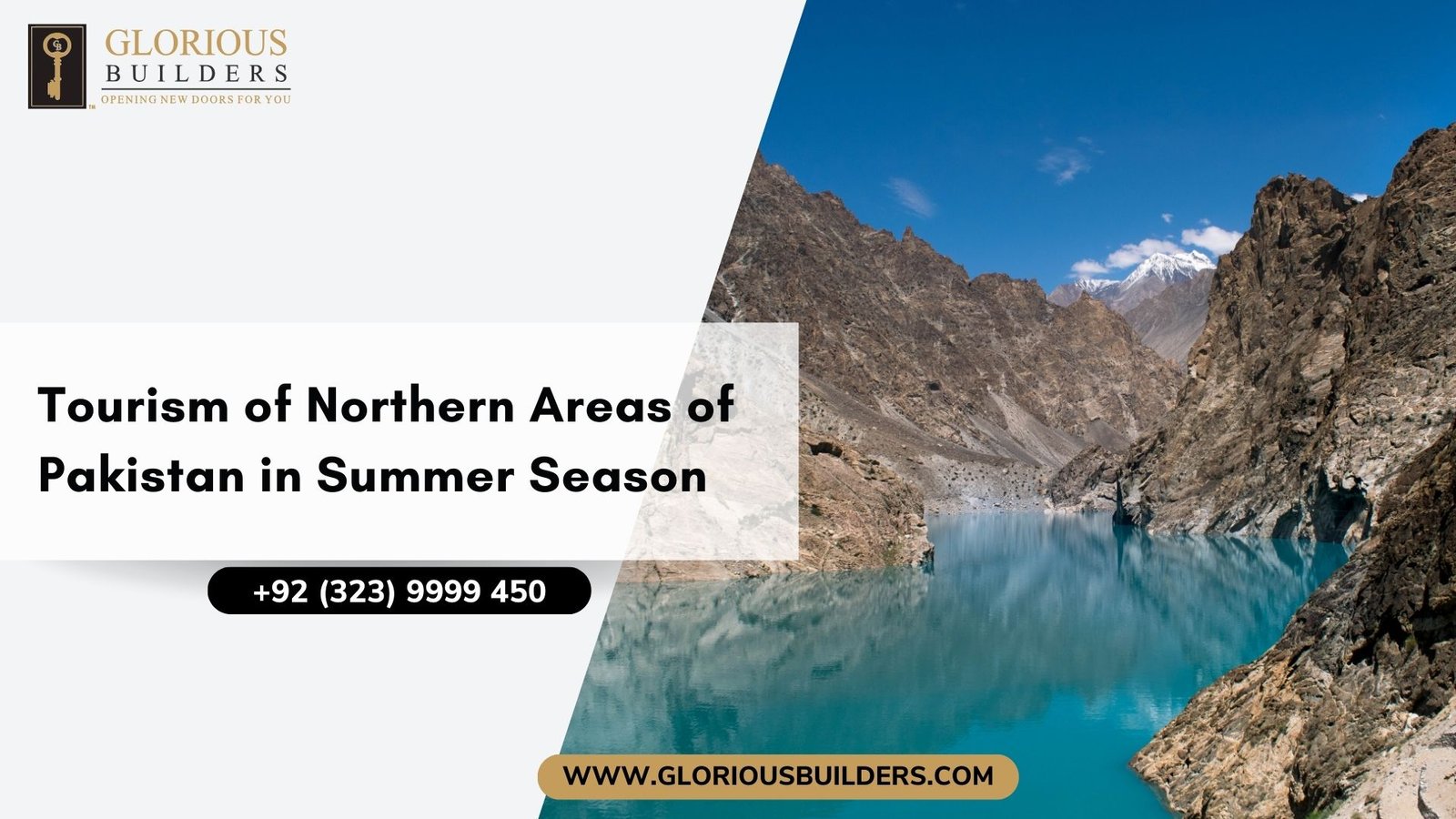Tourism of Northern Areas of Pakistan in Summer Season
Tourism in Pakistan has required an incredible twist in recent years. The fundamental focal point nearby just as global explorers has been the northern spaces of Pakistan. Stunning perspectives, social energies, and the superb normal natural surroundings show the genuine beauty of Pakistan.
The Northern Areas are the most dynamite and captivating district of Pakistan. The three world’s renowned mountain ranges meet here — the Himalayas, the Karakorums, and the Hindukush.
The historic Karakoram Pass (5,575 meters), an antiquated exchanging course between Northern Pakistan and Xinjiang, China, gives its name to the reach, which frames the watershed between the Indus and the Central Asian deserts.
Construction Companies in DHA Lahore are going to describe that how much people fascinating by the tourism of the northern areas of Pakistan and its remains very memorable for the tourists.
Gilgit
Situated at a height of 1,454 meters along the banks of Gilgit River, an interesting little town of Gilgit has breathtaking beautiful excellence. For quite a long time, it had been the capital of different traditions. Its set of experiences works out positively past the sixth century AD.
What to see?
Gilgit Bridge is a scaffold over the quick streaming Gilgit River. This is one of the biggest engineered overpasses in South Asia (182 meters in length and 2 meters wide) permitting sufficient room for each jeep in turn to cross.
A delightful standing Buddha figure (privately known as Yashin) is cut on a stone close to KargahNullah), 10 km from Gilgit town. It traces all the way back to the seventh century AD.
Stays of a Buddhist cloister and stupas of the sixth century AD were found in 1938 and 1956 close to Nurpur. There are additionally old stone carvings of creatures close to the Karakorum University and engravings close to Danyore.
Build-in 1962, Independence Monument is an accolade for the saints of the freedom development of 1947–48. A triumph landmark of Taj Mughal, constructed 700 years prior, as a token of Taj-ud-Din Mughal, a ruler who came to Gilgit Baltistan during the thirteenth century, AD, is 30 km jeep drive from Gilgit town.
Sher Qila (Lion’s Fort), arranged 38 km west of Gilgit, was at one time the capital of the antiquated Kingdom of Punial. It’s anything but a polo ground, an old cut wooden mosque, and a 150-year-old lookout, delegated with a couple of Ibex horns.
Gahkuch Headquarters of Ghizer District is an optimal spot for traveling, fishing, and duck shooting.
Yasin, the primary town of the Yasin Valley, 112 km west of Gilgit, is situated at an elevation of 2,750 m above ocean level. Individuals of Yasin communicate in Brushisky and Khowar dialects. Until the twentieth century, Yasin was a significant realm controlling the most limited and simplest course between the Oxus and the Indus streams.
Baltistan (Skardu)
Skardu is the capital of Baltistan. The Balti public is a combination of Tibetan and Caucasian stock and speak Balti, an antiquated type of Tibetan. Because of the closeness of its way of life, way of life, and design with Tibet, Baltistan is otherwise called the «Tibet-e-Khurd» (Little Tibet).
The tourist season in Baltistan keeps going from April to October. The greatest temperature here is 27 °C and the least — in October – 8 °C.
The five valleys of Baltistan — Shigar, Skardu, Khaplu, Rondu, and Kharmang — are acclaimed for their delicious peaches, apricots, apples, and pears.
What to see?
Kharpocho Fort — is an old Fort in Skardu. It was built by Ali Sher Khan Anchan, who administered over Baltistan till the finish of the sixteenth century.
Buddha Rock Carvings date back to the eighth century AD. It’s anything but a gigantic Buddha figure encompassed by little Buddhisatvas found three km from Skardu.
Mountain lakes — Upper Kachura, Lower Kachura, and Sadpara Lake — are celebrated for fishing and sailing.
Shigar Valley is the doorway to the incredible mountain pinnacles of the Karakorams, Gasherbrum, and K-2.
Khaplu Valley is a wonderful valley of the Shyok River 103 km east of Skardu. Khaplu is the beginning stage for a large portion of the journeying and climbing endeavors. Numerous popular mountains, for example, Masherbrum, Saltoro, SiaKangri, K-6, and K-7 are situated here.
Chaqchan Mosque is perhaps the soonest mosque in Baltistan (1504 AD), credited to Syed Ali Hamdani. There is a Palace of Raja of Khaplu and stays of Thorsikhar Fort.
Hunza
The guests to Hunza are overpowered by the tough appeal, the fragrant breeze singing through effortless Poplar trees and the velvet-like green rug of wheat fields, set against the foundation of snow-covered, mountains.
Most of the Hunza public are Ismaili Muslims, supporters of His Highness the Aga Khan. The neighborhood language is Brushiski, nonetheless, Urdu and English are additionally perceived by the vast majority of individuals.
What to see?
The previous capital of Hunza offers a remarkable scene of high pinnacles including Rakaposhi, Spantik, Diran, and Ultar.
The fantasy palace of Baltit, above Karimabad, is a Hunza milestone worked around 600 years prior. Initially, it was utilized as the home of the Mirs (the title of the previous leaders) of Hunza.
The Altit Fort is a 800-year-old fortress arranged in the town of Altit. The Fort was based on a sheer stone bluff over the Hunza River.
Chitral Valley
Situated at a normal height of 1.128 m, Chitral valley is the top pick among mountain climbers, travelers, fishers, trackers, and anthropologists. The Chitral area has Afghanistan on its north, south, and west. A limited piece of the Afghan region, (Wakhan) isolates it from Tajikistan.
What to see?
Chitral Town lies by the Chitral River at a rise of 1.518 m. The Shahi Masjid (Royal Mosque), the Mehtar’s Fort, and the Khowar places of the Chitralis merit seeing.
Garam Chashma (Hot Springs) valley offers picturesque magnificence, with plantations, fields, and snow-clad pinnacles. The most fascinating highlights, be that as it may, are its hot sulfur springs, celebrated for their mending impacts. ‘Hammams’ (showers) have been built close to the springs for the accommodation of sightseers.
Kalash Valley is one of the significant attractions of Chitral — the home of the Kalash public or «Wearers of the Black Robes», an agnostic clan. Legends say that five troopers of the armies of Alexander the Great got comfortable Chitral and are the begetters of the Kalash.
The Kalash ladies wear dark outfits of coarse material in summer and hand-turned fleece colored in dark in winter. Their beautiful headgear is made of woolen dark material decked out with cowries’ shells, fastens, and delegated with huge shaded plumes.
The Kalash love music and dancing on their special event celebration.
Sawat Valley
The rich green valley of Swat, with its surging deluges, frigid cold lakes, natural product-loaded plantations, and bloom decked slants is ideal for holidaymakers.
It’s anything but a rich recorded past, as well. This is the place that is known for enchanting excellence, where Alexander of Macedonia battled and won a portion of his significant fights prior to moving over to the delta of the Indus River.
It was the home of the acclaimed Gandhara School of Sculpture that was a declaration of Greco-Roman structure in the nearby Buddhist practice.
Smack is was likewise the authentic land, where the Muslim vanquishers, Mahmud of Ghazni, Babur of Ferghana and Akbar faced their conflicts preliminary to the success of South Asia.
What to see?
The Swat Museum situated in Saidu Sharif contains probably the best assortment of Gandhara craftsmanship on the planet.
Mingora, the twin city of Saidu Sharif, has yielded brilliant bits of Buddhist model and the vestiges of extraordinary stupas.
Marghazar, 16 km from Saidu Sharif, is well known for its «Sufed Mahal» — the white marble castle of the previous Wali (Ruler) of Swat.
Azad & Jammu Kashmir
Azad Jammu and Kashmir is a place that is known for entrancing individuals, dialects, and culture. Its populace is made out of various races guaranteeing their plunge from Semitic, Mongoloid, Aryans, Persians, Turks, and Arabs, communicating in various dialects like Kashmiri, Pahari, Gojri, Punjabi, and Pushto.
What to see?
Azad Jammu and Kashmir are renowned for its snow-covered pinnacles, thick woods, winding streams, and environment shifting from icy to tropical — all combine to make it a superb vacation spot.
Muzaffarabad, the capital of the Azad Jammu and Kashmir, is arranged at the conversion of the Jhelum &Neelum Rivers. There are two fortresses, specifically, Red and Black Fort, arranged on the contrary sides of the waterway Neelum. Spots of interest in and around Muzaffarabad are altar Pir Chinnasi, situated on the highest point of slopes at a rise of 2,900 meters from where one can get an extraordinary perspective on Muzaffarabad and provincial regions around the secret city.
Glorious Builders
DHA Construction Company in Lahore Get Direction
Bahria Town Construction Company in Lahore Get Direction




